Varicose veins (varicose veins) - a condition in which the veins increase in diameter, become winding. This is usually due to the work of the vein valve.
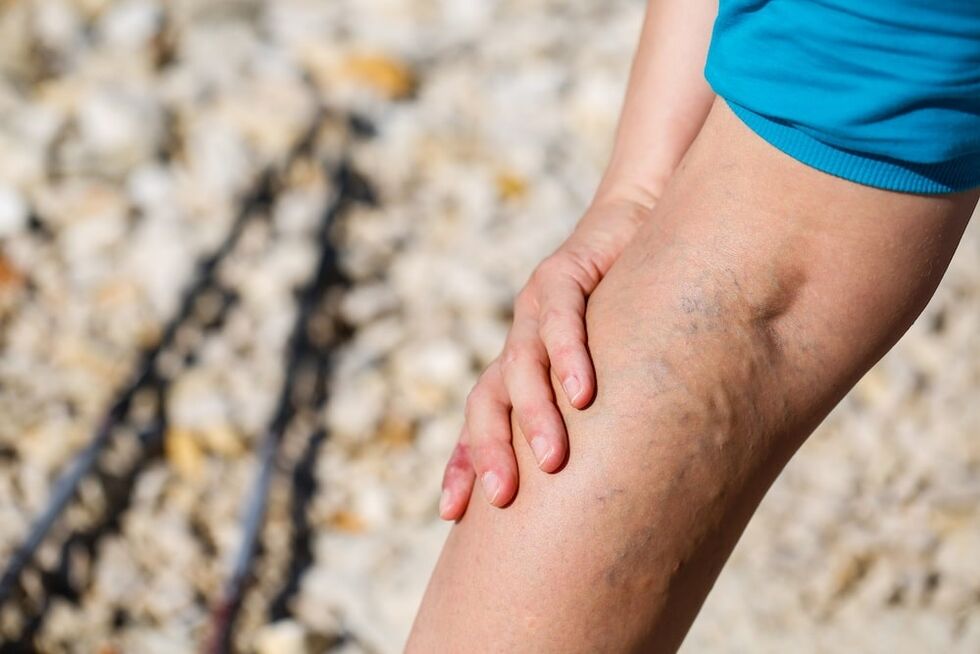
The vein system. Features -Features of veins.
The veins are part of the cardiovascular system, they carry blood from the peripheral tissue to the heart. The opinion that the blood of the vein always flows through the veins, and the artery always flows in the veins. In fact, this doesn't always happen. For example, the pulmonary artery carries venous blood from the heart to the lungs, and the pulmonary veins are returned from the lungs to the artery.
In many arteries, blood flow is under high pressure, so they have a dense wall. On the other hand, in the blood pressure veins are relatively low, so their walls are thinner and less dense. In the lumen of many veins there is a valve - they pass through the blood only in one direction, thus contributing to its predecessor to the liver. The valves are not present only in the head and neck, as they are on the liver, the blood flows down to it freely.
What happened in the veins? The essence of varicose veins.
Lower foot veins are forced to constantly experience increased load, as blood flow through the vessels occurs against gravity. The main mechanism leading to varicose veins:
- Excessive stretching of venous walls;
- Vein valve disorders.
It is far from always possible to say exactly why this pathological change occurs in the veins. There are factors that increase the risk of varicose veins.
The cause of varicose veins
Factors that increase the risk of disease:
- Direct. This factor is present in everyone. The feet are the farthest of the heart of the body, which is below the rest while standing and walking. Venous blood is the hardest to return to the liver from the feet.
- Age. As the risk of varicose veins increases, during wear veins. They stop closing completely, so that a small amount of blood can flow in the opposite direction. He survived the veins, instead of returning to the heart.
- Floor. Women have varicose veins more often than men. This is facilitated by hormone changes in the female body during pregnancy, in postmenopause, before menstruation. Female sex hormones contribute to the relaxation of the vein wall.
- Hormone replacement therapy and take oral contraceptives.
- Descent. The more your family members experience varicose veins in the lower leg, the higher your risk.
- Obesity. Additional pounds contribute to increased load on the cardiovascular system. Pressure in the veins increases.
- Stand or sit for a long time. This leads to blood stagnation in the lower body veins. For example, office workers, surgeons and others who "stand" and "sit" work often experience varicose veins.
- Pregnancy. During pregnancy, women experience varicose veins more often than in other life. This is due to some physiological changes in the body of a pregnant woman.
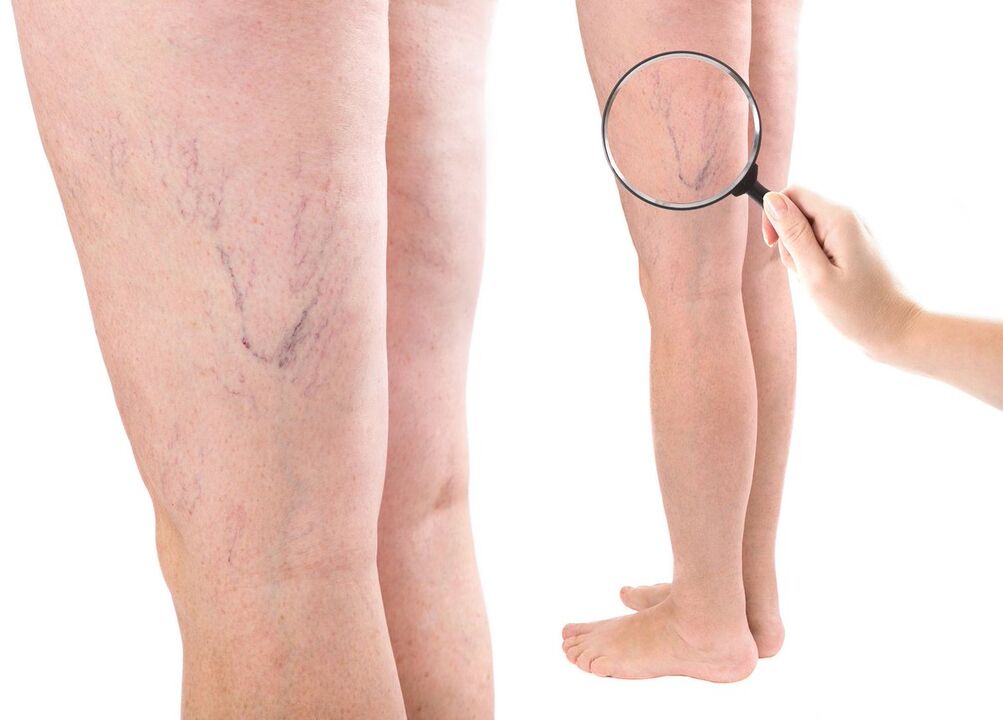
A sign of varicose veins
- Significant subcutaneous vein development. They rise, become winding, look good under the skin. Simultaneous expanded veins look like cereals, "blue worms" are blue or dark. Such a picture only occurs with varicose veins located under the skin. If the vein is located deeper in the affected fabric, it is impossible to see this outward.
- Sensation of severity in the feet. Usually it occurs or increases after intense physical work, in the evening and at night.
- A variety of unpleasant sensations. It can be a burning sensation, a pulse, tingling, numbness.
- Swelling in the feet. The movement of blood in varicose veins leads to the fact that the fluid begins to continue and accumulates in the tissue. Edema occurs closer in the evening, as a rule, first only on the feet. As infringement of venous blood flow increases, swelling extends to the lower leg, hip.
- Muscle cramps. They arise because they violate blood supply to the tissue, when one stands for a long time.
- Pain in the legs. Not all patients are worried. Is increasing with prolonged position.
The complications of varicose veins
In most patients, varicose veins do not lead to complications. But the following circumstances may occur:
- Bleeding. In the event of damage to the skin in the varicose vein, bleeding occurs, which may not stop for a long time. In such cases, you need to lie down, raise your feet and press in the bleeding area. If the blood continues to go, you should consult your doctor.
- Ulcer for varicose veins. Very painful, most often located on the ankle. Ulcers occur due to edema and blood supply to tissues in the varicose veins. Usually ulcers are preceded by pale places on the skin. If this complication arises, you should consult your doctor immediately.
- Thrombophlebitis for varicose veins. A condition in which blood clots grow on the vein wall and inflammation occur. In areas of damage, heat, redness, pain can occur. Usually, with this complication, doctors prescribe compression linen, painkillers.
- Chronic vein deficiency. Conditions in which oxygen, nutrients and residual products between the skin and blood are disrupted, due to the affected blood supply. Chronic vein deficiency increases the risk of pathology such as eczema, hard skin, trophic ulcer.
- Venous eczema (stagnant dermatitis). Skin lesions caused by stagnation of venous blood and edema. The main symptoms: red spots, peeling, itching in the field of varicose veins.
- Anxious foot syndrome. It is characterized by unpleasant sensations in the feet that arise at rest. Patients must always make movements, which is why sleep is often interrupted.
Compression linen for varicose veins
Compression stockings and elastic bandages with varicose veins compress the expanded veins, thus improving blood circulation. As a rule, the underwear wrappers are around the most tight ankle, and above gradually becomes more free. It helps the blood move through the veins towards the strength of the gravity - up to the heart.
Many patients note that compression stockings and elastic bandages help overcome discomfort, pain, edema.
Despite the fact that compression linen helps increase blood flow and overcome some symptoms, it does not cure varicose veins. During the study, vague results were obtained, so scientists could not say whether compression socks helped eliminate or prevent varicose veins.
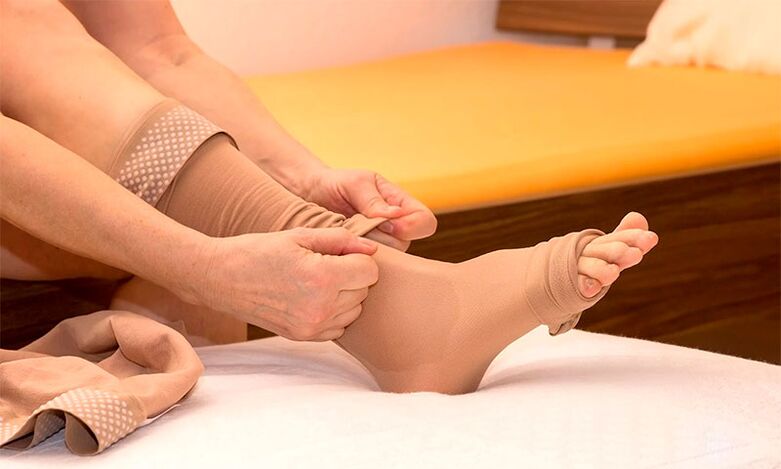
Compression linen varieties:
- Stockings and tight. The most common types of compression wash. Stockings reach the hips, tight - to the waist. Tight compression is the easiest, as it stays safe and not slide.
- Golf. They reached the knees. Often used by men. There are different models.
- Elastic bandage. There are different lengths, can only be meant to wrap the lower leg or lower leg and hips. This is the cheapest, but the most uncomfortable compression linen. The bandage should be used longer than wearing tight clothing or socks, it is always slide. The compression level is manually controlled by controlling the strength of the bandage, and is not always enough.
Operation for varicose veins
With varicose veins in the feet, they use surgical treatment. Usually surgery is performed under general anesthesia. In most cases, the patient is released from the hospital on the day of the surgical intervention. If the operation is performed on two feet, then it may be necessary to spend one night in the hospital.
There are various types of varicose vein surgery.
Dress and removal of expanded veins
Two wounds are made: one in the thigh, the other below, the ankle, the knee or the other. At the top is found, wrapped and crossed by veins. Through it, a special thin wire is carried out to the bottom, after which it is pulled together with the below. Removing the surface vein will not affect the blood supply to the foot, as its function will take the veins.
Complications Possible dressing and removal of veins:
- the formation of large bleeding;
- bleeding;
- ill;
- Very rare complications are deep vein thrombosis.
Recovery of performance after such surgery in most patients occurs within 1-3 weeks. During this time you need to wear compression socks. In the event of a venous deficiency, compression pants should be used in the long run.
Sclerotherapy
During this procedure, special materials are introduced into the veins, which damage the walls from the inside and lead to lumen overlap. Varicosis occurs within a few weeks. Sometimes the medicine should be administered several times.
Ablation of radio frequency
This technique provides the heating of vein walls using radio frequency energy. Procedure Course:
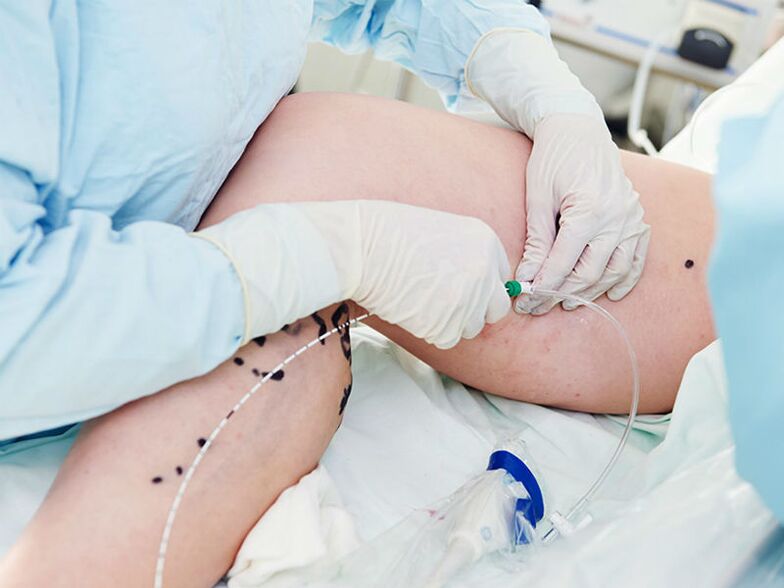
- Small pieces are made on or below the knee and access to Vienna.
- Under the control of the ultrasound, the catheter (half -flexible tube) is performed in the veins.
- Then, through the catheter, the doctor conducted an investigation that emitted radio frequency.
- The energy emitted by the investigation of the heat of the veins from the inside, causing burning and closing the lumen of the ship.
Usually this operation is performed under local anesthesia, without anesthesia. During the procedure, the patient may have a small sensation that resembles an injection with a pin. Sometimes small skin burns occur. Within a few weeks after the radio frequency ablation, the compression linen must be worn.
Varicose vein treatment with laser
Closing the vein can also be caused by the irradiation of the wall from the inside with the laser. Procedure Course:
- The catheter is introduced into the patient's veins.
- Laser radiation sources are performed through the catheter to Vienna.
- The laser causes the heating of the veins, the combustion of the walls from the inside and the lumen ceiling.
- The surgeon directs the laser ray under the control of the ultrasound and gradually burns the vein wall.
As a rule, the treatment of varicose veins with lasers is carried out under local anesthesia. This procedure is effective in 98% of cases.
Exercise for varicose veins
Therapeutic gymnastics can benefit varicose veins. Below we will consider the simplest set of exercises, but before the implementation, you must consult your doctor. Only your doctor can say exactly where the load is not contraindicated to you and can benefit.
How gymnastics can help with varicose veins:
- increase venous outflow and lymph;
- increased blood supply to the lower leg;
- increase vein wall tone;
- increased blood circulation in small vessels;
- Strengthening the leg muscles, increasing their endurance.
Massage for varicose veins
Massage can be used for varicose veins, but not necessarily, it depends on the level of severity and the presence of complications. Do not get involved in yourself, it is best to contact a professional massage therapist.
Massage for varicose veins helps reduce symptoms such as swelling, seizures, numbness and other discomfort. It relieves tension in the muscles and helps restore the normal tone of the vein wall. With varicose veins, massage is often combined with physiotherapy exercises.
How to handle varicose veins at home?
There are several steps that can be used independently, at home to slow down the development of varicose veins and reduce the discomfort accompanied by:
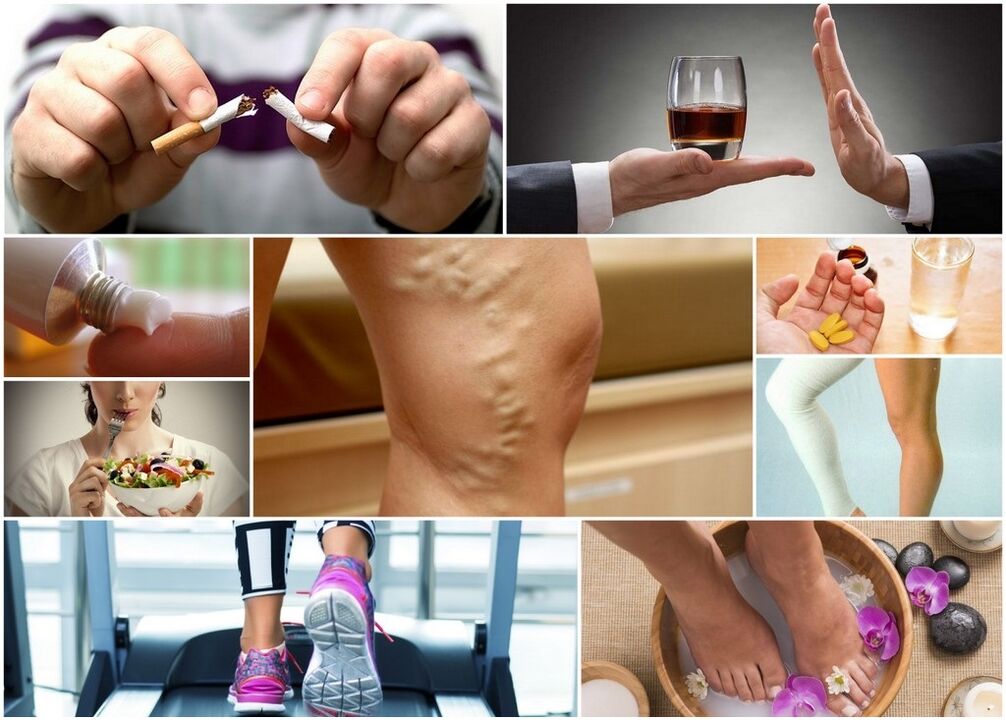
- Physical activity. Walking helps strengthen the leg muscles and increases the flow of venous blood. Consult your doctor, he or she will recommend the level of physical activity that is right for you.
- Maintaining a healthy weight. Adhere to a healthy diet. If you have overweight or overweight, try eliminating extra pounds. Consulting with nutritionists: Experts will suggest the optimum food properties in your case.
- The right choice of clothing. Do not wear high shoes, tight linens and clothing.
- Raise your feet. It will be very good if you can take a period of time and raise your feet above the heart level. When you sleep or just lie down on the bed, put 3-4 pillows under your feet.
- Rest by sitting or standing. Try to move every 30 minutes.
- Do not put your feet on your feet as you sit down. As a result, the veins are squeezed, the flow of blood is even more disturbed.
Prevention of varicose veins
It is not possible to prevent varicose veins completely. Existing precautions only help slow down the disease or slow down its development, if it has arisen.
- If you need to sit or stand for a long time, make sure you rest. Walk, go. If possible, you can lie down and raise your feet.
- Try to keep your feet in a raised position when you sit, rest, sleep. Sometimes it is useful to go to the couch or on the floor and hold their feet raised, leaning against the wall.
- The more often your feet are higher than the heart level, the better for their veins.
- Do physical exercises that help strengthen the leg muscles. Thanks to this, blood movement will improve through the veins.
- If you have overweight or obesity, try to lose weight. This will not only reduce the risk of varicose veins, but also positively affects the overall state of the cardiovascular system.
- Do not wear narrow clothes, especially attractive on the waist, thighs, feet. Therefore, the flow of blood through the veins may worsen.
- Try wearing high shoes as little as possible. As a result, the tone of the leg muscles is interrupted, they stop helping to push blood through the veins.

















